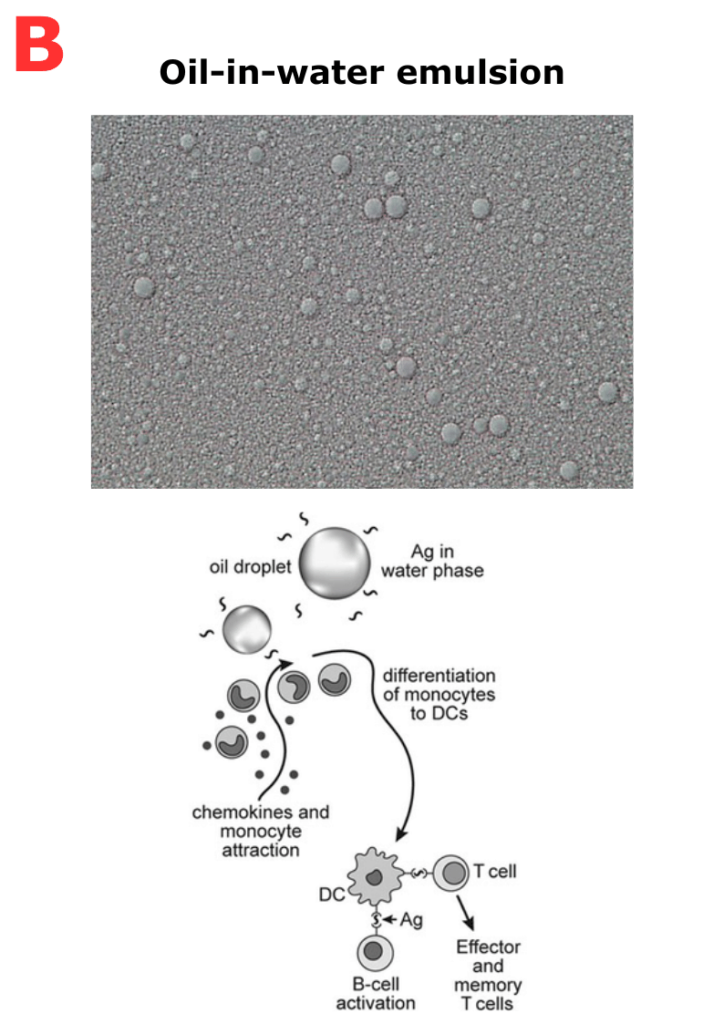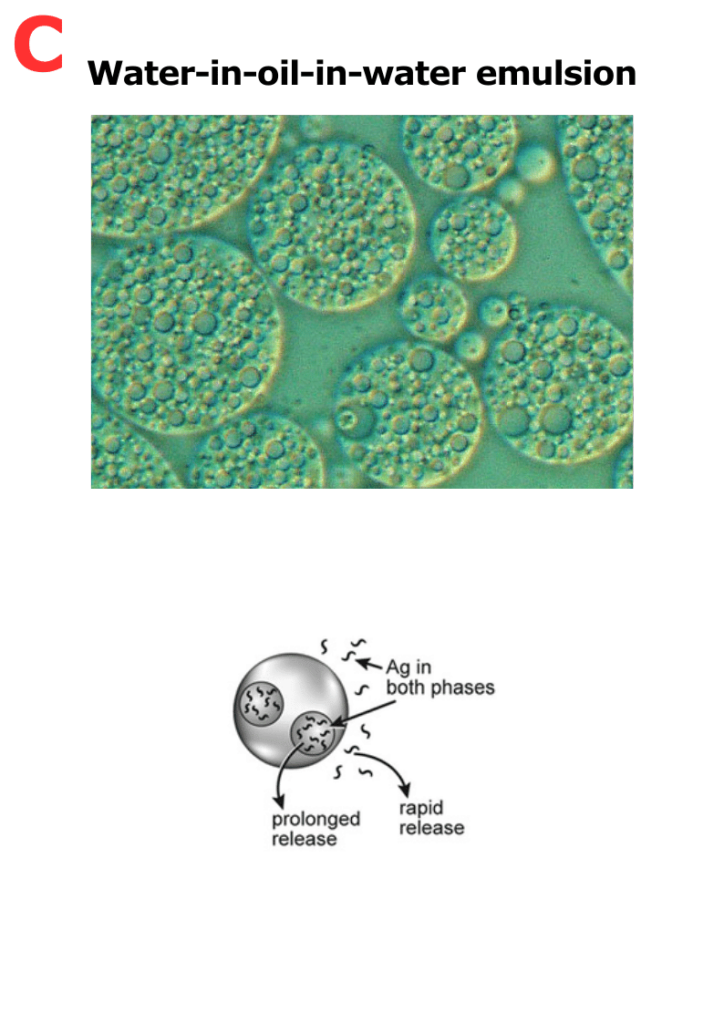Adjuvants are substances that help to boost the immune response when administered with an antigen. This term comes from the Latin “adjuvare” meaning “to help”. Adjuvants can help create potent and long-lasting immune response with fewer doses and reduced antigen content.
One type of adjuvant used in veterinary vaccines is called emulsion. It contains liquid and continuous dispersed phases, and water (antigenic media) and surfactants are added to stabilize the mixture.
When selecting an adjuvant to complement a vaccine, it is crucial to consider multiple factors. These factors encompass the necessary duration of immunity, mode of administration, animal type, dosage volume, production procedure, and other relevant aspects. It is important to note that no universal adjuvant can be applied to all cases, and thus, a tailored approach is required, balancing both effectiveness and safety.



The first emulsion used as an immunopotentiator was named after Jules T. Freud and called Freud’s complete adjuvant (containing killed mycobacteria) or Freud’s incomplete adjuvant without killed mycobacteria in oil formulation; today, there are various kinds of emulsions can be achieved based on the HLB value of the surfactant.
For example, water in oil (W/O) emulsions can induce a substantial and long-term immune response based on mineral oils, which are very efficient but can cause local reactions. Oil in water (O/W) emulsions are well tolerated and induce a short-term immune response, and the multiphasic (W/O/W) emulsions induce short- and long-term immune responses with various antigens. Adjuvant emulsions function as delivery systems by generating depots that trap antigens at the injection site, providing slow release to continue the stimulation of the immune system. These adjuvants enhance the antigen persistence at the injection site and increase antigen-presenting cell recruitment and activation (APCs).
Vaccines that produce strong reactions are very problematic in the field. Often, customers complain of animal weight loss, low milk production, poor growth, abscesses, and even paralysis. That is why it is important to have a product that produces low local reactions but with a strong immune response.
Many veterinary vaccines, including the Foot and Mouth disease vaccine (FMD), Rabies, and Blue Tongue, use emulsion in their formulation. These vaccines often use water-in-oil or water-in-oil-in-water emulsions similar to Freud’s adjuvant). Emulsions enable many countries to control and even eradicate some diseases due to the solid and long-lasting immune response they provide.
Poultry vaccines also use emulsions, for example, Newcastle Inactivated Disease, Infectious Bronchitis, and Egg Drop Syndrome, in their composition. Emulsions enable the combination of several antigens in a single vaccine dose, including viruses and bacteria, accommodating high payloads and protein content providing animal protection with minimal handling.
Fish vaccines also use emulsion in their formulation due to the difficulty of fish husbandry vaccination. The vaccines for Atlantic Salmon reduce clinical signs and protect against various diseases, including SPDV, IPNV, and furunculosis, with immunity lasting up to 16 months post-vaccination. These vaccines have significantly reduced antibiotic use in the salmon industry and increased productivity.
Many adjuvants, such as aluminum hydroxide, carbomers, and saponins, can and are used in animal health vaccines. The key is to test different products with different antigens to find the perfect combination of safety, efficacy, and cost.

